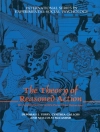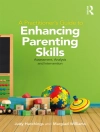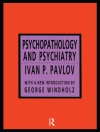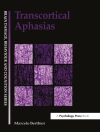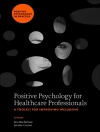Gain a better understanding of parent-child boundaries and the mechanisms for their dissolution The breakdown of appropriate generational boundaries between parent and child can threaten the child’s psychological development. Implications of Parent-Child Boundary Dissolution for Developmental Psychopathology: Who Is the Parent and Who Is the Child? explores this covert and oftentimes ignored form of emotional abuse, discussing in detail the various ways it can manifest. This revealing text comprehensively examines how the burden of meeting the emotional needs of the parent interferes with the child’s healthy development. The boundary dissolution patterns of role reversal, enmeshment, psychological control, and triangulation are closely examined with an eye toward providing appropriate strategies for dealing with the problem.Implications of Parent-Child Boundary Dissolution for Developmental Psychopathology is separated into four sections to focus extensively on every aspect of the problem. The first section discusses definitions, concepts, and methodological concerns of the phenomena, including a consideration of the child’s developmental responses to boundary dissolution. The second section explores the empirical research concerning boundary dissolution within the family system, and includes intriguing information on the actual mechanism that passes the pattern of role reversal on to the following generation. The next section closely examines boundary violations within high-risk families, with a focus on those undergoing divorce. The final section concentrates on cultural contexts of boundary dissolution and includes a look at the perception of familial responsibility and its effects on Bosnian youths. This one-of-a-kind resource is extensively referenced, and provides a solid foundation to inspire a new generation of theory, research, and clinical work.Implications of Parent-Child Boundary Dissolution for Developmental Psychopathology examines: a multidimensional model of boundary dissolutionwith supporting research a comprehensive review of published literature in the areas of attachment theory, developmental capacities of the infant, child-rearing practices, and parental beliefs the theoretical background supporting the construct of boundary dissolution the boundary disturbance patterns of enmeshment and control the relationships between interparental conflict, parental responses to children’s emotions, and representations of role reversal and vulnerability in children’s family drawings the ’spill over’ effect of marital conflict role reversal in high-risk families children’s rejection of one parent over another in custody disputes post-war adjustment of Bosnian adolescents psychological control in individualist and collectivist groups representations of parents and children in twentieth century American novels Implications of Parent-Child Boundary Dissolution for Developmental Psychopathology is crucial reading for researchers and clinicians who deal with families and psychopathology and is of particular interest to graduate students in clinical child psychology, child and family studies, social work, and developmental psychology.
Patricia K. Kerig
Implications of Parent-Child Boundary Dissolution for Developmental Psychopathology [PDF ebook]
"Who Is the Parent and Who Is the Child?"
Implications of Parent-Child Boundary Dissolution for Developmental Psychopathology [PDF ebook]
"Who Is the Parent and Who Is the Child?"
Köp den här e-boken och få 1 till GRATIS!
Språk Engelska ● Formatera PDF ● Sidor 316 ● ISBN 9781317824817 ● Redaktör Patricia K. Kerig ● Utgivare Taylor and Francis ● Publicerad 2014 ● Nedladdningsbara 6 gånger ● Valuta EUR ● ID 3204831 ● Kopieringsskydd Adobe DRM
Kräver en DRM-kapabel e-läsare


